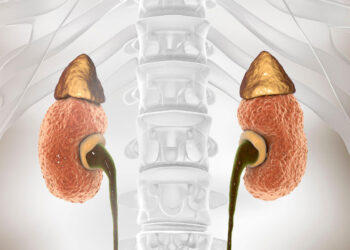
Can we broadcast quantum information?
Weiquan Lin/Getty Images
Sharing quantum information the same way we broadcast TV or radio programs may be impractical – even for mathematical schemes that sidestep the limitations posed by quantum physics.
We have long known that quantum copy machines could never exist because the laws of quantum physics forbid any piece of quantum information from being duplicated, a rule called the no-cloning theorem. But then physicists started exploring whether they could avoid breaking this law and still distribute – or broadcast – copies of quantum information to many receivers.
To do so, researchers would have to allow the quantum copies to differ slightly and to add new information-processing steps for the receivers. Now, Zhenhuan Liu at Tsinghua University in China and his colleagues have shown that these schemes may be prohibitively impractical.
“There’s no ‘Ctrl+C’ in the quantum world,” says Liu. “If you want to send quantum information to multiple receivers, there’s no efficient shortcut – you simply have to prepare enough copies and send each of them.”
The researchers focused on a previously proposed protocol for “virtual quantum broadcasting”, where information is manipulated so that different states are correlated with each other but aren’t direct physical replicas of one another. In this case, the message delivered to each receiver wouldn’t be an exact copy, but the copies would share enough properties to be useful. It is comparable to a situation in which a TV network simultaneously broadcasts a slightly different serialized drama to each household, but keeps the story, on average, the same. Although this protocol certainly works, says team member Xiangjing Liu at the National University of Singapore, the researchers wanted to know if it is efficient.
They quantified how much effort receivers would have to go through for the information that reaches them to be useful, despite not being identical. This mathematical analysis led them to conclude that practical quantum broadcasting may just not exist.
Counterintuitively, even this tweaked version of the quantum broadcasting approach – akin to sending a group text where everyone receives a message at once – would require more resources than a technique more like writing an individual letter to every receiver from scratch, says team member Yunlong Xiao at the Agency for Science, Technology and Research in Singapore.
“If your sole goal is simply distributing quantum states to different places, I think looking into the virtual quantum broadcasting is certainly a wrong approach,” says Seok Hyung Lie at Ulsan National Institute of Science and Technology in South Korea. He says the protocol had always been conceived as an investigation into the fundamental constraints on processes in quantum information theory, rather than a practical recipe for quantum communication.
Paolo Perinotti at the University of Pavia in Italy says that the team’s work is commendable as a mathematical effort, but also that he thinks it is unlikely to have an immediate impact on quantum technologies.
Going forward, the researchers are also interested in the theoretical lessons of their current analysis. It could help us understand just what correlations – whether between quantum states distributed in space, or sent one after another in time – are allowed and can be manipulated. Xianjing Liu says the work may become part of a new framework for understanding quantum processes, one that separates time and space less than traditional approaches.
Topics:
- quantum computing/
- quantum physics
Source link : https://www.newscientist.com/article/2492799-it-is-impossible-to-build-a-practical-quantum-broadcaster/?utm_campaign=RSS%7CNSNS&utm_source=NSNS&utm_medium=RSS&utm_content=home
Author :
Publish date : 2025-08-15 17:00:00
Copyright for syndicated content belongs to the linked Source.











